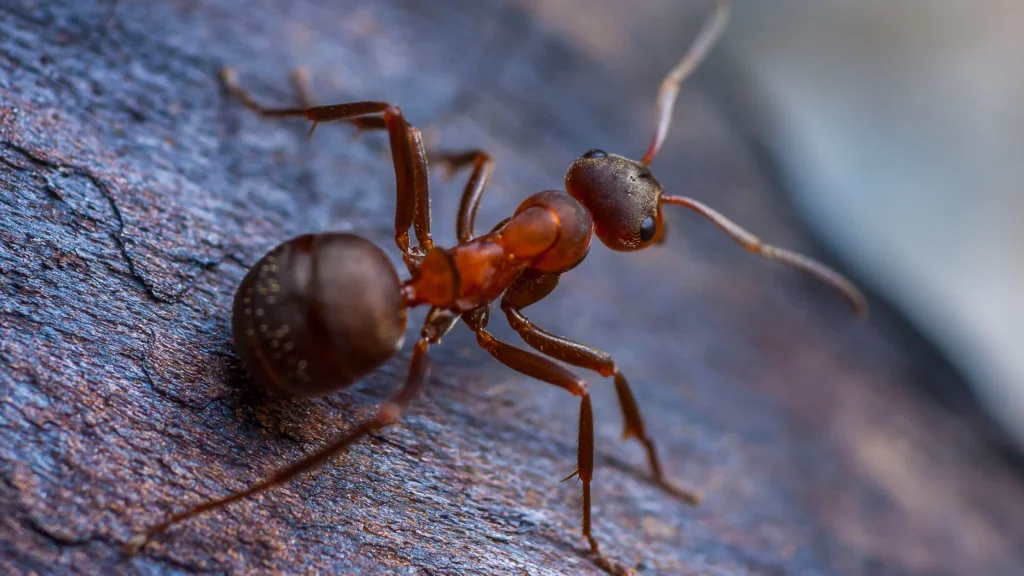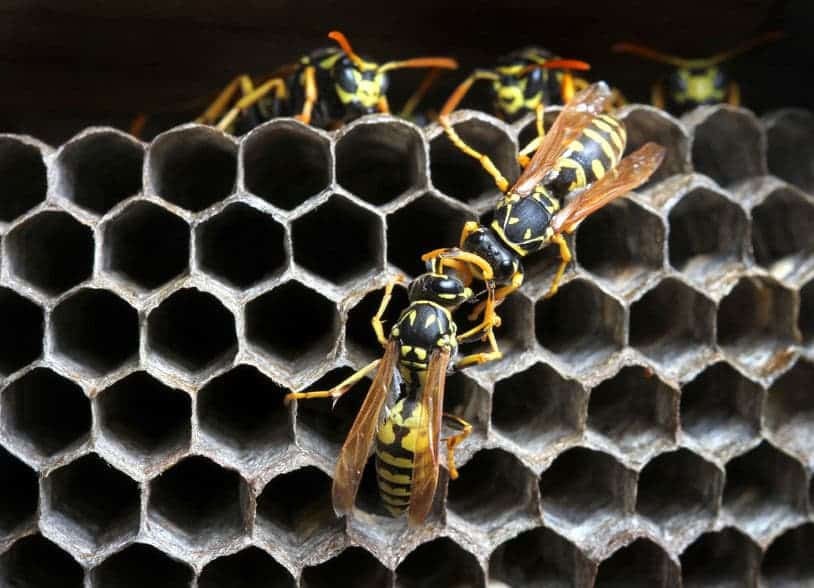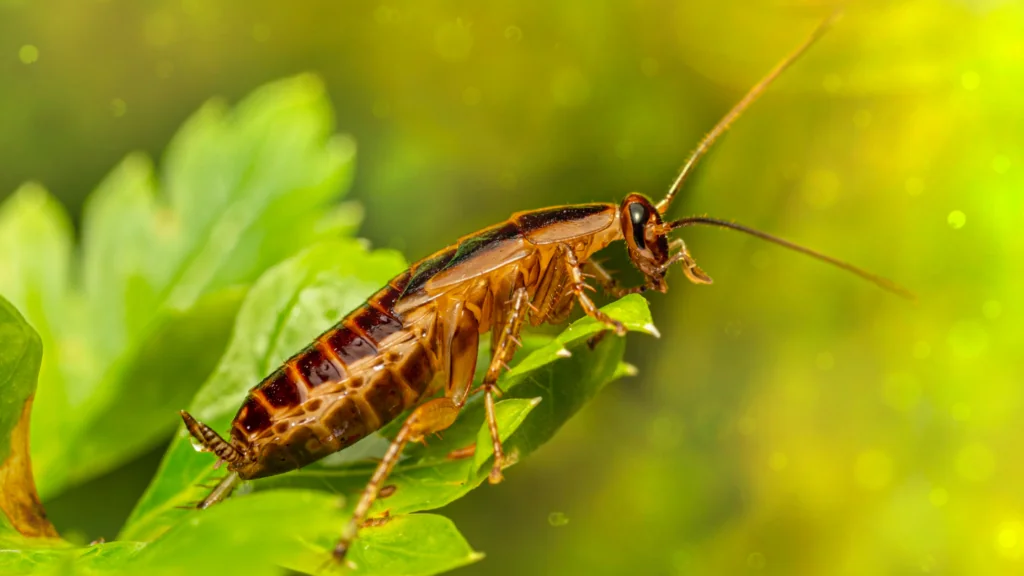It’s Termite Time
Did you know that termites cause billions of dollars of property damage every year? You read that right: Billions of dollars. So, what’s the scoop on these teeny-tiny property damage aficionados?

Meet the Termite
Termites are social insects that live in colonies that can vary in size from a few thousand to several million. Similarly, there is a range of territory that termites can cover, it could be as small as a few square feet or up to an acre. Termites feed on cellulose, which is the main structural component of plant matter – including the wood used to build various structures. Of course, termites live underground, so much of the time they are hidden. It’s not uncommon for homes to be built directly over these hidden colonies, meaning termite damage is a very real risk for every homeowner. This also means that oftentimes, it is difficult for a homeowner to detect termite damage until it has become severe.
No matter the species of termite, there are certain roles members of the colony must evolve into and play. These roles include the Queen, King, Soldiers, Workers, and Alate.
Workers make up the vast majority of termite colonies. Their responsibilities include gathering food for the colony, as well as building and maintaining the nest.
Soldiers, making up less than 5% of most colony populations, are responsible for protecting the nest. Generally, they are protecting the colony from other insects that try to intrude. Soldier termites each have a large head and intimidating mandibles which come in handy when defending their colonies. Ants are a common enemy of termites. You might think that would be good news for termite Soldiers, but ants tend to come into termite colonies in large numbers. When the Soldier is significantly outnumbered, that can be a problem for them.
Alate are the winged termites that we see during termite swarming season.



Termite Lifecycle
Before we dive in too far, let’s run through the basic lifecycle of termites and their colonies. Termites create what are called swarming events. This happens when a reproductive male and female Alate depart their mature, established colonies to create a new one. Males and females create pairs, and their wings fall off after they’ve flown to the site of their soon-to-be colony. The newly established Queen lays eggs, which become larvae. As the colony works to grow, those larvae will become Soldiers or Workers. The focus for the first several years after a new colony is established is to grow as much as possible, creating thousands to millions of individual termites. Once the colony reaches maturity, larvae will become Nymphs, which then become Alate – the future swarmers.
But how do you know if the winged insects you see are termites? After all, most termites don’t have wings and they live underground. Unfortunately, termites are not the only flying pest. Even worse, there are other flying pests that resemble termites, making identification an important step in the pest and termite control processes. The most common pest that is confused with termites is the flying ant. Treatment for flying ants will vary from treatment for termite swarmers, so it’s important to diagnose the issue before treating. An easy way to determine what kind of pest is the source of your headache is to evaluate the basic shape of the insect.
Keep an eye out for how broad the abdomen of your problem pest is, that will be a good indicator along with the wing shape. You’ll notice that ants have three distinct body segments compared to termites having only two. Termites also have a broader body shape as compared to ants. If the wings are relatively the same in shape and size, that’s a termite swarmer. Ants will have two different shaped wings of different lengths. And just like that, you now know how to discern between termite swarmers and flying ants! Now how about the different types of termites in Florida?
Types of Termites in Florida
Compared to the rest of the U.S., Florida is plentifully populated with diverse species of termites. There have been 21 species of termites recorded in Florida with a minimum of 6 invasive species. Not to brag, but that’s more than any other state. That can be blamed on our sub-tropical climate and high human activity. If you’re interested in termite distribution in Florida, check out this map created by the University of Florida’s Institute of Food and Agricultural Sciences with the Fort Lauderdale Research and Education Center.
Now, for your sake (and ours) we aren’t going to cover all 21 species of termites in Florida. Instead, let’s review the main categories that termites are classified in based on their habitat and lifestyle.
Subterranean Termites
Native species: Eastern Subterranean Termite, Cuban Subterranean Termite, Florida Dark-winged Subterranean Termite
Invasive species: Formosan Subterranean Termites, Asian Subterranean Termites, West Indian Subterranean Termites
Of the over $2.2 billion spent annually on termite control in the U.S., 80% of that damage is due to Subterranean termites. They can live both above and below ground as long as there is sufficient moisture. Some subterranean termites, such as the Formosan, infest a wide variety of structures (including boats and high-rise condominiums) and can damage trees. In the United States, they are responsible for tremendous damage to property resulting in large treatment and repair costs.
Subterranean termites create a network of interconnected tubes or passages between feeding sites. These can be either above or below the surface. Generally, a colony of Subterranean termites can range in size from 100 thousand to one million. They will travel up to 150 feet to forage for food. In some cases, they will go above ground for food and enter a home through small cracks or through shelter tubes they build along the foundation. Essentially, these tubes serve as an express route for underground termites to above-ground food sources.
Unfortunately, Subterranean termites generally stay well hidden, meaning that most people do not become aware of an infestation until swarming season, when Alates take flight to create new colonies elsewhere.
Drywood Termites
Native species: Florida Drywood Termite
Invasive Species: West Indian Drywood Termite, Western Drywood Termite
Drywood termite colonies usually live in the roots or trunks of old trees, digging tunnels and feeding on wood, behavior that can cause the death of infested trees. They can also infest beams and roofs of the houses, libraries and archives, producing serious damage. However, here in Florida, it is most common for Drywood termites to stick to dry or dead trees, logs, branches, and stumps. Due the limited resources of their environments, Drywood termite colonies cannot reach the same massive size that Subterranean termite colonies can. One interesting characteristic of Drywood termite feeding behavior is that they will consume the meat of a wooden object without breaking the surface. They also produce small, hard waste – yes, we’re trying to use polite language here – which is commonly referred to as frass or drywood pellets.
Dampwood Termites
Native species: Florida Dampwood Termite
Dampwood termites are the largest termites in the Eastern U.S., but on the East coast, they are only found in Florida. They are also native to Hawaii, Puerto Rico, and the Virgin Islands. Dampwood termites require higher humidity, as their name implies, and they also need more frequent access to water sources. Unlike Subterranean termites, Dampwood termites do not forage in soil.
Due to the Dampwood termites’ need for high moisture environments, their infestations of various structures are associated with access to water. For example, this could include homes exposed to roof leaks, siding frequently exposed to rainfall or sprinklers, and wood-to-soil contact. These sorts of damp conditions can also lead to the fungal decay of a structure, so it is in the best interest of the owner to correct detrimental conditions.
Luckily, the need for damp conditions also means habitats are less plentiful for Dampwood termites than other species. This makes them less of a threat than other types of termites, but don’t be mistaken: the damage they can do is still severe, you’re just less likely to have a run in with them.
What does termite damage look like?
Termites are usually good at staying out of sight, but there are some signs you can look out for. While spotting swarmers during swarming season is a pretty blatant sign, there are more subtle clues you can look for all year round.
- Bubbling or cracked paint
- Hollow-sounding wood
- Mud tubes on walls or beams
- Wings discarded by Alates
- Termite droppings (very small pellets)
- Drywall that is discolored, sagging, or has small holes in it
- Buckling or very squeaky floorboards
- Crumbling wood
- Loose tiles
- Maze-like patterns occurring in the floor, walls, or furniture in your home
- Windows and doors being stuck
How to prevent termites
Keep in mind that the different types of termites each require a different control method. For example, Dampwood termites can be treated in part with the removal of moisture in the structure and by using a pretreatment on the wood used to build the structure. Meanwhile, removing moisture would not impact Drywood or Subterranean termites in the same way.
Of major concern in Jacksonville is the Formosan subterranean termite, the most destructive termites in the country. Formosan termites live in very large colonies, which makes them especially threatening since they can do extensive damage in less time than other species. Turner Pest Control’s experts have contributed to a City of Jacksonville task force that was formed to address the serious threat that Formosan termites pose to property here.
Determining which species you have simply by examining a single termite is next to impossible for anyone other than an experienced pest control technician. If you suspect a termite problem in your home, contact our termite extermination experts for proper identification and the recommended treatment method.
Turner’s Ultimate Termite Protection – What sets us apart?
Maximum applications
Some pest control providers only meet minimum specifications for treatment, which may not be enough for customers whose homes are particularly vulnerable to termite damage. At Turner Pest Control, we do things differently—our technicians treat your home with the maximum application allowed.
Thorough coverage
Our entomologists and technicians know termites: Where they hide, how they come in, and how to exterminate them. We do an extensive inspection of your home and develop a treatment plan that’s customized to your specific needs.
Our technicians will apply a complete perimeter treatment and treat under patios, in the seams where slabs join, inside concrete blocks, behind brick, in bath traps, and where pipes and other utilities give termites an entry point into your home. We also provide treatments that stop termites before they have a chance to come into your home.
Your choice of treatment
You can choose from a variety of termite treatments:
- Termidor HP Treatment
- Conventional Liquid Treatment
- Baiting System
TERMIDOR HP: THE ULTIMATE TERMITE TREATMENT
The Termidor HP High-Precision Injection System treats the toughest termite problems without the disruption that trenching and rodding methods cause to landscapes or hardscapes in your yard. It allows for extremely precise applications of the industry’s leading liquid termite product. It is a 3,000 PSI injection. The device mixes the chemical and water at the nozzle with incredibly precise ratios, resulting in 75% less water being used as compared to conventional liquid treatment.
CONVENTIONAL LIQUID TREATMENT
This is what most people think of when they think of termite control. It’s the widely accepted “trench and treat” method. We use Termidor HE, Premise, or Altriset liquid treatment, depending on client preference and the best fit for a given home. The liquid treatment creates a barrier in the soil that prevents termites from crossing.
BAITING SYSTEMS
We use Trelona or Sentricon bait stations, which are inserted into your lawn around the perimeter of your home. Smaller stations can also be placed inside your home in areas where termites have been found. The bait systems are beneficial because the bait is brought back to the colonies by worker termites, which addresses the problem at its core.
PROTECT WITH TURNER PEST CONTROL
We’re committed to providing the latest, safest and most effective termite control. Call our team at 800-225-5305 to find out more about our comprehensive termite control.
Written using resources from UF/IFAS (1, 2, 3, 4, 5, 6, 7), select vendors (8, 9, 10, 11), and feedback from our in-house entomologists.



